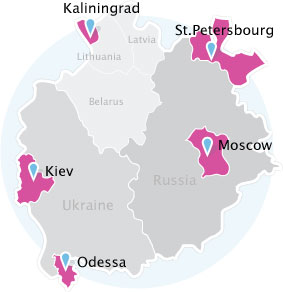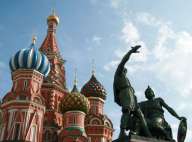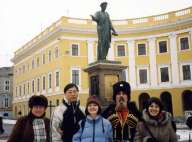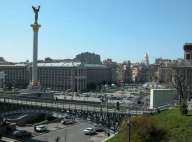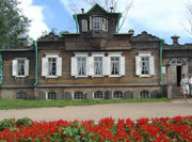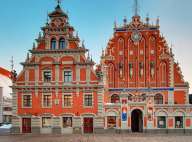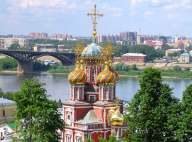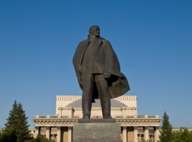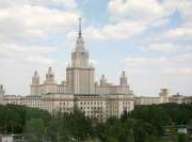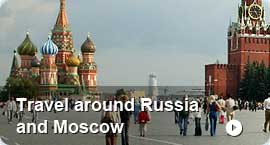Keyfacts Russia
Key data and facts on Russian Federation
Visit also our History of Russia page to see the development of Russia in its historical context.
President:
Dmitry Medvedev (elected March 2, 2008),



prior Vladimir PUTIN (elected March 26, 2000),
prior Boris N. Yeltsin (1991 until 31.12.1999)
Prime Minister:
Vladimir PUTIN
Area: 6,592,800 sq mi. (17,075,200 sq km)
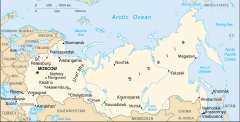
Capital and largest city : Moscow: city (2005 est.) 10.4 Mio.
Other large cities (2005 est): St. Petersburg, 4.1 Mio; Novosibirsk, 1.4 Mio; Nizhny Novgorod, 1.3; Yekaterinburg, 1.3 Mio; Samara, 1.15 Mio, Omsk, 1.14 Mio; Kazan, 1.09 Mio; Ufa, 1.09 Mio; Chelyabinsk, 1.08 Mio; Perm, 1.01 Mio.
Monetary unit: Ruble (banknotes since 1961)
Religions: Russian Orthodox, Muslim, others
Ethnicity/Race: Russian 81.5%, Tatar 3.8%, Ukrainian 3%, Chuvash 1.2%, Bashkir 0.9%, Byelorussian 0.8%, Moldavian 0.7%, other 8.1%
Languages: Russian, others
Literacy rate: 99%
Age distribution:
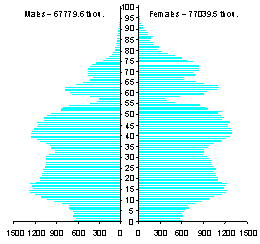
Life expectancy: male: 59.1, female: 73.0 (2007 est.).
2001 figures for comparison: male: 62.1 years, female: 72.8 years
Population: 141,377,752 (July 2007 est); 143,420,309 (July 2005), average annual rate of natural decrease: –0.48%); birth rate: 10.9/1000; infant mortality rate: 11.0/1000; density per sq.km.: 8.4; current fertility rate: 1.4 children born/woman (2007 est.)
English/Russian/English Electronic Dictionary
Economic summary: Russia has vast mineral resources include oil and natural gas, coal, iron, zinc, lead, nickel, aluminum, molybdenum, gold, platinum, and other nonferrous metals. Yet, Russia is in a dire economic situation. GDP per capita has fallen by about 40 % since 1992 and dropped to only 15 % of US levels. However, after the crisis in 1998, GDB and industry production has started to grow and imports have fallen drastically. There are increasingly larger differences in economic prosperity between cities and rural areas. Due to rising oil prices, Russia’s economic power has risen considerably again.
Economic data: GDP/PPP (est. 2006): 1.7 trillion $ (1998: $593.3 billion) $12,100 per capita
Growth rate: 6.6%; Inflation: 9.8% (2006), 11.5% (2004), 16.2% (2002), 20.6% (2001).
Unemployment: 6.6% (est. 2006), considerable underemployment.
Labor force 73.9m (2006), 71.8m (2004), 72.3m (2001)
Exports: $317bn (2006), $162bn (2004), $162bn (2004), $103bn (2001): petroleum and petroleum products, natural gas, wood and wood products, coal, nonferrous metals, chemicals, civilian and military manufacturers.
Imports: $171bn (2006), $92bn (2004), $52bn (2001) : machinery and equipment, chemicals, consumer goods, grain, meat, semifinished metal products.
Major trading partners: Europe, N. America, Japan, China
External debt: 6% of GDP; State budget: revenues of $222bn with expenditures of $157bn (2006)
For more detailed facts, consult the CIA Factsbook of Russia or the Official Russian Statistical Office

